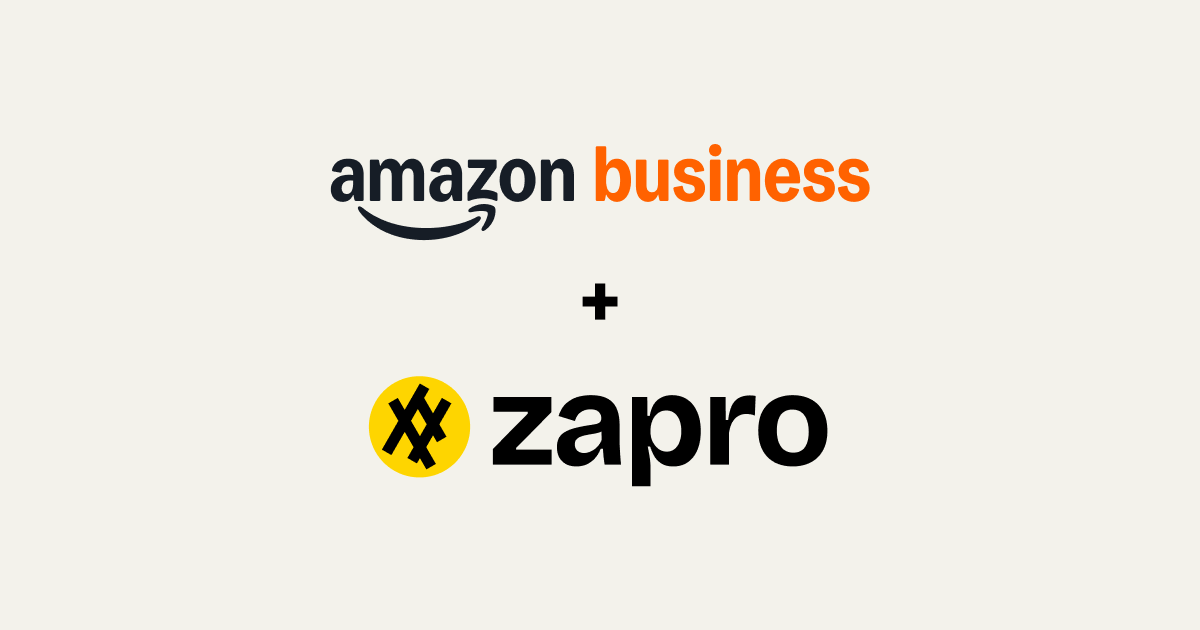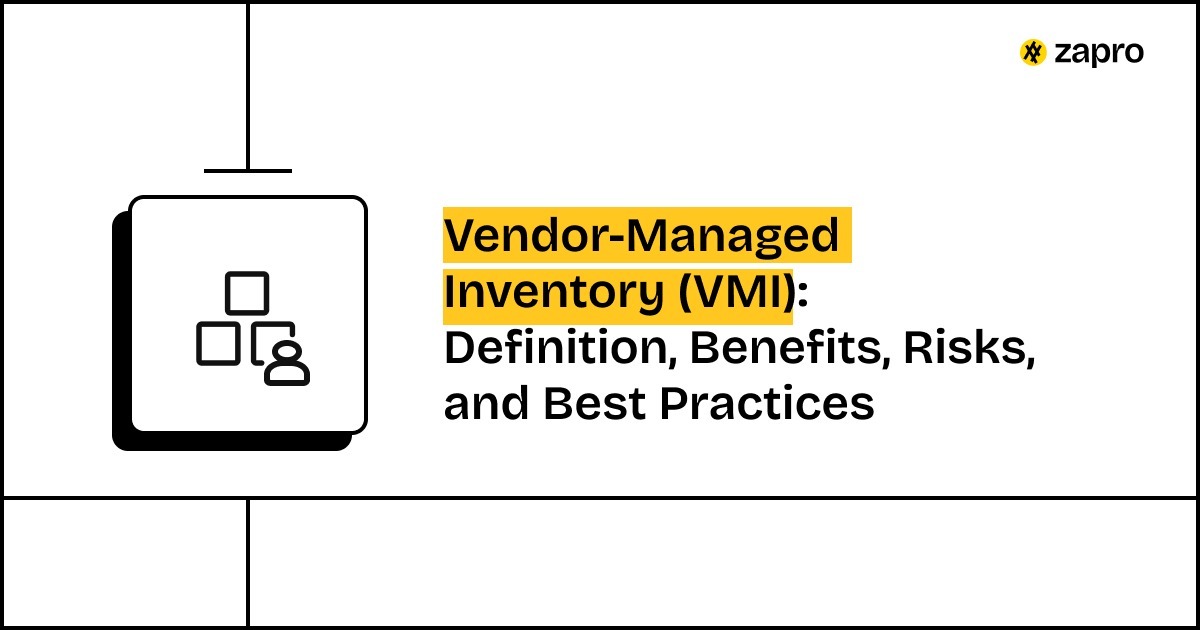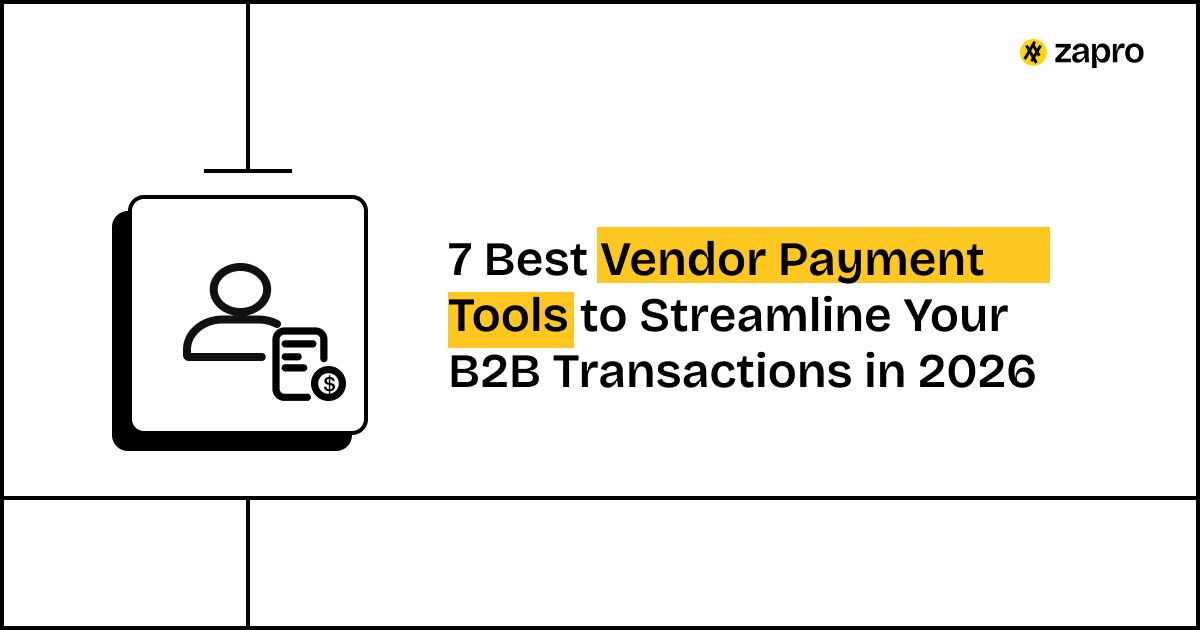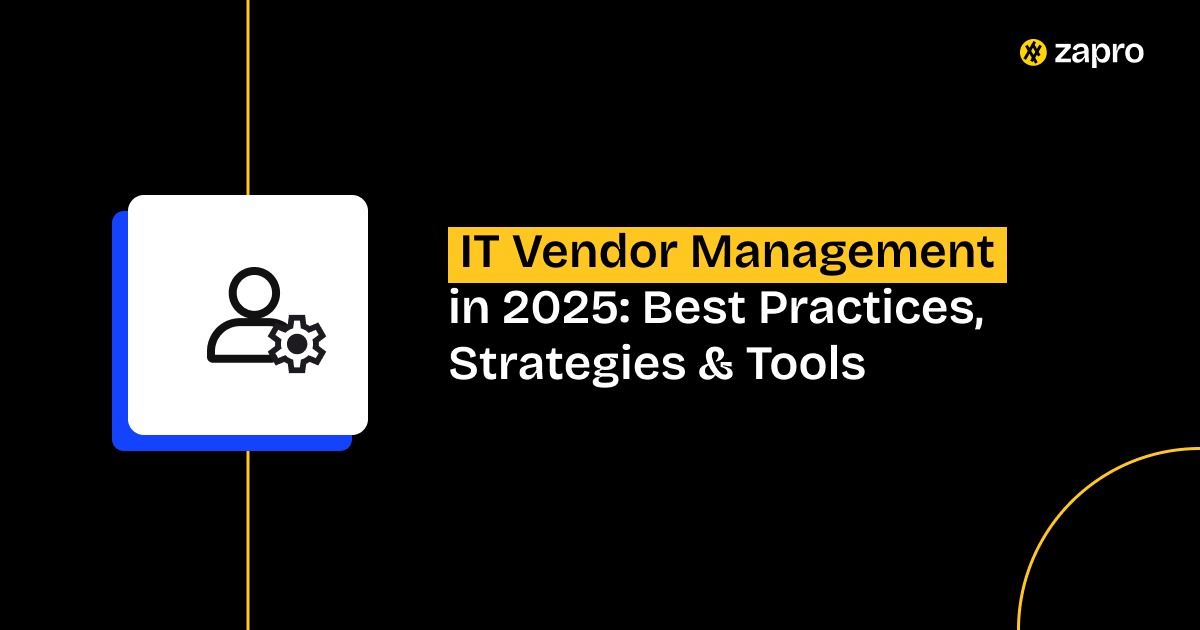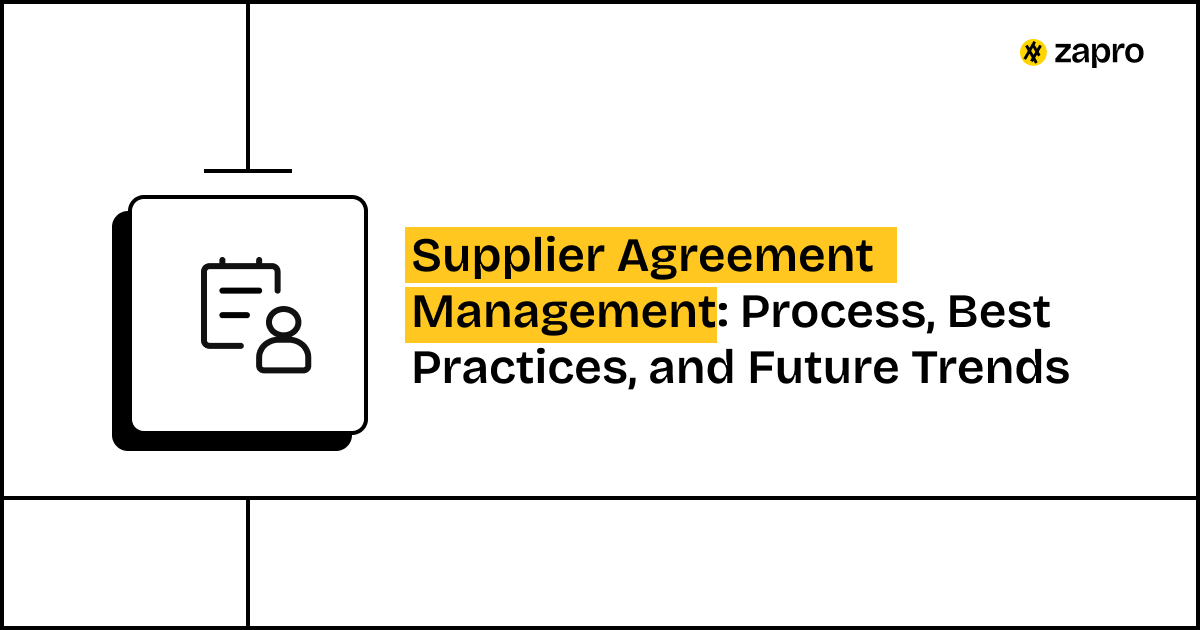What is Vendor-Managed Inventory (VMI)?
The supply chain partnership of Vendor-Managed Inventory (VMI) allows suppliers to manage customer inventory replenishment through real-time consumption tracking and service level agreements.
Under VMI, the supplier actively monitors inventory levels to maintain stock availability while avoiding excessive inventory and stock depletion.
The partnership between vendors and buyers results in optimized inventory management which reduces storage expenses and enhances supply chain responsiveness.
Example:
A retail store uses automatic inventory monitoring to start supplier restocking when their stock levels reach a predetermined minimum. The supplier sends replenishment stock without requiring a purchase order from the buyer. The system operates through VMI principles.
Origins and evolution of VMI
The concept of Vendor-Managed Inventory emerged during the 1980s and 1990s when Walmart and Procter & Gamble implemented data-based collaboration to minimize inventory waste.
- Early phase: The system operated through manual methods which depended on EDI (Electronic Data Interchange) and spreadsheets.
- Transformation phase: The practice of VMI transformed into an automated analytics-based system which depends on E-procurement Software, Vendor Management Systems, and AI-based forecasting tools.
- Current phase: The present version of VMI operates as a system which enables suppliers to form strategic alliances with businesses. Real-time dashboards and predictive analytics and shared performance metrics help businesses enhance their supply chain operations.
| Pro tip: Companies that link VMI to Vendor Management Processes and Supplier Management Software achieve enhanced coordination, reduced disputes, and stronger supplier connections. |
How vendor managed inventory differs from traditional inventory management
The system operates with distinct methods which separate it from conventional inventory management practices.
- In traditional systems, the buyer maintains complete control over all inventory management activities starting from demand forecasting through purchase order placement. The supplier starts their work after receiving an order from the buyer.
- The system operates with a reversed approach under VMI. The supplier takes an active role by using joint data to predict customer requirements while keeping agreed-upon stock quantities.
Comparison of traditional inventory vs. VMI
| Aspect | Traditional Inventory | Vendor-Managed Inventory (VMI) |
| Replenishment | The buyer initiates all replenishment activities through order placement. | The supplier takes the lead in restocking operations. |
| Ownership | The buyer maintains full ownership of inventory throughout the entire process. | The supplier maintains control of inventory until the delivery process starts. |
| Data access | The system allows buyers to see limited data. | Suppliers and buyers can access the same information. |
| Forecasting | The buyer forecasts demand. | The supplier takes responsibility for forecasting through the analysis of buyer-provided data. |
| Communication | Traditional systems rely on periodic updates. | The system operates through continuous real-time communication. |
How does vendor-managed inventory work?
The operation of vendor-managed inventory depends on continuous data exchange between suppliers and buyers.
The system of Vendor-Managed Inventory (VMI) enables suppliers to access real-time sales and stock data from buyers for demand forecasting and automated inventory replenishment.
Sequential steps of VMI operation
- The buyer enables data exchange between systems by sharing inventory information, sales data, and forecast predictions through an integrated dashboard.
- The supplier uses the received data to create future demand forecasts which guide their replenishment planning for maintaining continuous inventory supply.
- The supplier follows established thresholds to send inventory directly to the buyer’s warehouse or store location.
- The two parties monitor performance indicators including stockout rates, fill rates, and inventory turnover to assess their performance.
The system removes all uncertainty while shortening delivery times to establish a better synchronized supply chain operation.
Key stakeholders involved
- Supplier: Tracks buyer data to create replenishment plans and schedule delivery operations.
- Distributor and retailer: Offer precise inventory information to work together for service level optimization.
- Procurement and finance departments: The Vendor Management Process requires procurement and finance departments to evaluate supplier performance and manage agreements and process payments.
It achieves smooth operations and operational efficiency through proper alignment of these roles.
Technology/software used in VMI
The modern VMI system depends on automated data visibility tools which include:
- Vendor Management System (VMS): The system provides tools to handle supplier information while monitoring their performance and sustaining communication networks.
- Supplier Relationship Management Software: The system helps partners develop better collaborative relationships through its improved transparency features.
- Analytics integrated with ERP systems: The combination of analytics processes which integrate seamlessly with Enterprise Resource Planning (ERP) systems.
- AI-based forecasting tools: These technological solutions work together, and AI enhances the precision of demand forecasting systems.
- E-procurement Software: Enables automated order approval.
Benefits of vendor-managed inventory
The implementation of Vendor-Managed Inventory (VMI) between suppliers and buyers enables data-based transparency which generates shared benefits for both parties. The supply chain becomes more flexible and operates at lower costs through this approach.
1. For suppliers
- The real-time sales and inventory data access enables suppliers to create better production plans.
- The ability to forecast better enables suppliers to handle their production capacity and material resources effectively.
- The process of regular communication helps suppliers develop trust with buyers which leads to enduring business partnerships.
- The system generates steady order patterns which minimize both customer demand peaks and manufacturing pressure points.
2. For retailers and distributors
- The proactive inventory management system of suppliers prevents stockouts from occurring which reduces the need for emergency restocking.
- The system helps buyers maintain optimal inventory levels while freeing up their working capital funds.
- The automated replenishment system eliminates the requirement for human intervention to process orders and track inventory levels.
- The continuous product availability leads to improved customer satisfaction which results in higher customer retention rates.
3. Joint benefits
- The partnership enables both parties to decrease their storage expenses and insurance premiums and eliminate costs from obsolete stock.
- The implementation of data-driven workflows enables faster delivery times for orders.
- The tracking of KPIs between partners including fill rate and inventory turnover enables them to achieve ongoing improvement.
- The partnership between suppliers and buyers creates supply chain stability during times of market changes.
Pro tip: Organizations that link VMI with Vendor Management Systems and Supplier Relationship Management Software achieve better operational performance and enhanced supplier-buyer partnership.
Challenges of vendor-managed inventory
Vendor-managed inventory systems present multiple challenges that organizations need to handle properly to achieve efficiency gains. The implementation of VMI systems brings operational advantages yet organizations need to handle specific management difficulties.
1. Reduced buyer control
Buyers experience reduced control over their stock management and ordering processes when suppliers take charge of inventory replenishment. The process of stock management and order scheduling under VMI systems makes buyers feel they have lost their ability to control these operations.
Solution: The implementation of clear agreements together with visibility tools enables organizations to achieve balance in their operations.
2. Dependence on supplier performance
The success of VMI depends on suppliers to maintain both accurate forecasting and reliable delivery performance. The system becomes vulnerable to stock shortages and inventory overstocking when suppliers make mistakes during their operations.
Solution: The implementation of Vendor Management Tools enables organizations to monitor supplier performance while minimizing delivery errors.
3. Data sharing and trust concerns
The process of data sharing between parties creates trust-related problems and data protection concerns. The sharing of sales and inventory data requires organizations to establish trust-based relationships with their partners. Some organizations avoid revealing their confidential business information to others.
Solution: Organizations need to establish strong Supplier Relationship Management systems and implement robust data protection protocols.
4. Implementation complexity
The process of implementing VMI systems becomes complicated because it requires system integration and team coordination. Small businesses face difficulties when implementing VMI because they lack proper Supplier Management Software.
Solution: A pilot program serves as an effective method to help organizations adopt new systems.
Vendor-managed inventory metrics
The correct set of metrics enables suppliers and buyers to assess VMI program effectiveness. The KPIs demonstrate how well the inventory operates in terms of efficiency, response time, and reliability.
1. Fill rate
The metric shows the percentage of customer orders that suppliers complete without any delays. A high fill rate shows that the replenishment process operates smoothly while the supplier delivers excellent results. Stockout forecasting and replenishment accuracy results in lower stockout rates.
2. Inventory turnover
The inventory turnover metric determines the speed at which products move from stock to sales during a specific time frame.
Efficient stock management combined with better demand planning leads to lower holding costs. Higher turnover rates show faster product movement and better cost efficiency.
3. Forecast accuracy
The assessment of supplier demand forecasting precision against actual sales performance occurs through this metric. Accurate forecasting helps organizations avoid both stockouts and overstocking situations and reduces unnecessary expenses.
Assess Vendors in Minutes, Not Weeks

VMI agreements and best practices
A properly organized VMI agreement helps both parties understand their duties, obligations, and anticipated results. The agreement provides essential elements for maintaining open communication and effective teamwork between parties.
A) Essential elements of a VMI contract
A successful VMI contract needs to establish the following elements:
- The agreement must specify who owns inventory and how it will be transferred between parties.
- The agreement must include performance standards that define delivery times, stock levels, and product availability rates.
- The agreement requires details about data transfer methods and exchange periods.
- The agreement requires payment information and dispute handling methods and pricing structure details.
- The agreement must include performance measurement criteria together with established review periods.
- The agreement should outline procedures for communication and teamwork between parties.
B) Performance reviews and communication
The success of VMI requires suppliers and buyers to meet regularly for performance metric assessments and delivery problem resolution to prevent major issues from developing. The teams should perform performance evaluations through regular meetings that occur monthly or quarterly to track KPIs and identify potential delivery problems.
The implementation of Vendor Management Tools enables teams to monitor updates and exchange information while maintaining mutual understanding.
C) Data-sharing protocols
The implementation of defined data-sharing procedures helps organizations maintain accurate information and build trust between partners. The agreement needs to specify which data points will be exchanged (sales data, forecast information, stock quantities) and the exact timing and technological platforms for data transfer.
The combination of Supplier Relationship Management Software with cloud-based dashboards provides secure real-time access to data for all parties involved in the system.
D) Shared business goals
The system needs both parties to collaborate for achieving shared business objectives. The success of VMI depends on suppliers and buyers who unite to reach shared objectives that include cost reduction and service enhancement and sustainability programs.
Strategic partnership between partners becomes achievable through KPI and incentive alignment which stops the relationship from turning into a mere transactional exchange.
| Pro tip: The implementation of VMI within your Vendor Management Process creates better supplier responsibility and leads to successful long-term business partnerships. |
Vendor-managed inventory software and systems
The implementation of technology enables VMI operations to become more efficient while achieving scalability. The correct software solution enables automated data sharing, better forecasting, and complete supply chain visibility.
A) Features to look for in a vendor managed inventory software
The evaluation process for VMI software and systems requires assessment of solutions which provide these essential features:
- Real-time data sharing: The system provides immediate updates about sales performance and inventory levels and shipping activities.
- Customizable dashboards: The system allows users to create personalized dashboards which display fill rate data and stockout tracking and inventory turnover metrics.
- Automation: The system provides automated processes for both order creation and replenishment operations.
- Integration: The system needs to integrate with ERP, E-procurement Software, and Vendor Management Systems.
- Advanced notifications: The system generates automatic alerts to users about stock depletion and delivery issues.
B) Examples of popular vendor managed inventory software
The following tools support VMI operations:
- SAP Integrated Business Planning (IBP): Provides organizations with advanced forecasting capabilities and collaborative features for advanced planning.
- Oracle SCM Cloud: Provides businesses with real-time inventory monitoring and artificial intelligence-based stock optimization capabilities.
- Infor Nexus: Provides automated replenishment and supplier collaboration.
- Zapro.ai: Combines Vendor Management capabilities with supplier collaboration and automated contract management through predictive analytics to enhance inventory management.
C) Modern VMI operations with AI and predictive analytics
AI systems in VMI operations produce better forecasting results through improved accuracy and early warning capabilities. The combination of predictive analytics with automation allows suppliers to forecast market changes and execute automatic restocking processes.
AI integration within Vendor Management Tools enables businesses to identify supply chain threats ahead of time while maximizing stock efficiency and building stronger relationships with suppliers.
When to use vendor-managed inventory
Every business needs to evaluate whether Vendor-Managed Inventory (VMI) suits their operations. The system performs optimally in sectors with consistent demand patterns, solid supplier partnerships, and efficient data exchange capabilities.
- Industries best suited for VMI
The following sectors demonstrate the most suitable conditions for implementing VMI systems:
- Retail: The automated replenishment system with stockout prevention works optimally for businesses handling large quantities of fast-selling products.
- Healthcare: The healthcare sector depends on VMI to maintain uninterrupted access to essential medical supplies and pharmaceuticals.
- Manufacturing: The system operates as a production line support mechanism through its ability to maintain continuous flow of raw materials and components.
- Automotive: The automotive industry uses VMI to handle intricate supply networks through synchronized part delivery systems which minimize inventory expenses.
The required scale and systems for Vendor Management Processes and real-time collaboration exist in these specific industries.
B) Indicators for VMI implementation
A business should consider VMI implementation based on these specific indicators:
- The company faces inventory level changes because its demand prediction methods are inadequate.
- The procurement team dedicates too much time to handle purchase order management.
- Your organization has established enduring business partnerships with essential suppliers.
- The organization already operates a system which enables stock and sales information exchange.
- Your organization seeks to decrease inventory expenses while enhancing delivery performance standards.
Pro tip:
A Vendor Management System or Supplier Management Software already in use creates a direct path to implement VMI for data-driven procurement operations.
Vendor-managed inventory examples
The most successful VMI programs emerged from worldwide businesses which transformed supplier partnerships into business-winning strategies.
A) Real-world case studies
- Walmart and Procter & Gamble (P&G):
Walmart and P&G implemented VMI in the 1980s to achieve better stock availability and minimize stockouts. The companies achieved reduced inventory costs and enhanced product availability through their ongoing data exchange system which allowed P&G to monitor Walmart inventory levels in real time for automatic restocking. The system enabled both companies to achieve better inventory management through reduced storage expenses and accelerated product movement. - Dell:
The company applied VMI to operate just-in-time inventory management for computer components at its assembly facilities. The suppliers operated stock management at Dell assembly plants to prevent production disruptions while minimizing material storage needs. - Automotive suppliers:
The automotive industry depends on VMI to track parts throughout its complex supply chain networks. The suppliers track component usage through data collection to perform automatic replenishment which supports efficient assembly line operations.
B) Key takeaways from VMI programs
- Every VMI program requires complete data visibility to establish trust between partners.
- The implementation of Vendor Management Systems together with Supplier Relationship Management Software enables smooth coordination between partners.
- The implementation of VMI programs starts with a restricted product selection which later expands to multiple product categories.
- The sustainability of VMI depends on suppliers and buyers achieving mutual benefits through cost reductions and operational improvements.
Expert Insight: Companies that implement VMI with Vendor Management Tools and predictive analytics achieve quicker responses and better supplier performance.
Why Zapro is the right solution for vendor-managed inventory
Zapro provides the best answer for vendor-managed inventory operations.
The success of Vendor-Managed Inventory depends on technological solutions that connect suppliers with their buyers. Zapro distinguishes itself from other solutions.
Zapro combines Vendor Management with Supplier Collaboration and Procurement Automation through a single connected platform which enables full control and visibility of inventory operations.
With Zapro you can:
- The system uses current sales and stock information to perform automated inventory replenishment.
- The system includes dashboards and KPIs that enable users to track supplier performance.
- AI analytics within the system enables better forecasting accuracy.
- The platform enables better supplier collaboration through shared data access and workflow management and communication features.
- The system provides smooth integration capabilities with all current ERP and procurement management systems.
Zapro functions as a strategic enabler which enables businesses to reduce inventory expenses while preventing stockouts and developing better data-based relationships with suppliers through its advanced capabilities.
Zapro offers organizations the necessary agility and intelligence and transparency to advance their Vendor Management Process and VMI operations.
Discover how Zapro helps you automate replenishment, boost visibility, and build stronger supplier partnerships — all in one platform.

VMI Made Simple with Smart Automation
Streamline vendors, eliminate stockouts, gain real-time visibility.
Don’t miss our weekly updates
We’ll email you 1-3 times per week—and never share your information.
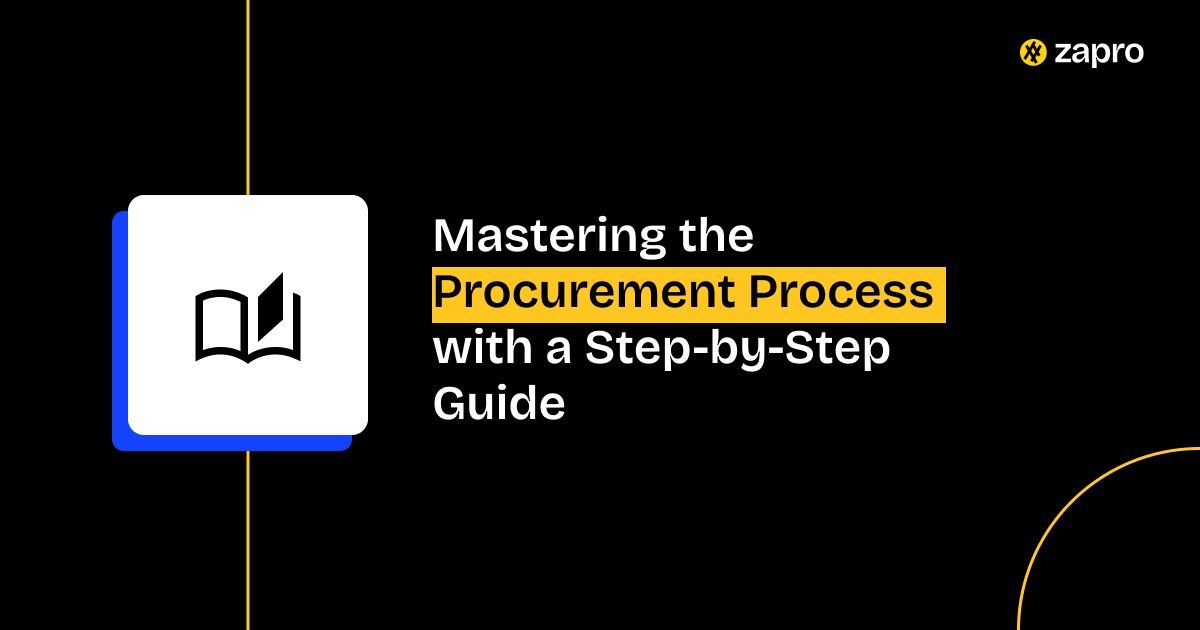
 Healthcare
Healthcare Financial Services
Financial Services Technology
Technology Venture Capitalist
Venture Capitalist Chief Procurement Officer
Chief Procurement Officer Chief Financial Officer
Chief Financial Officer